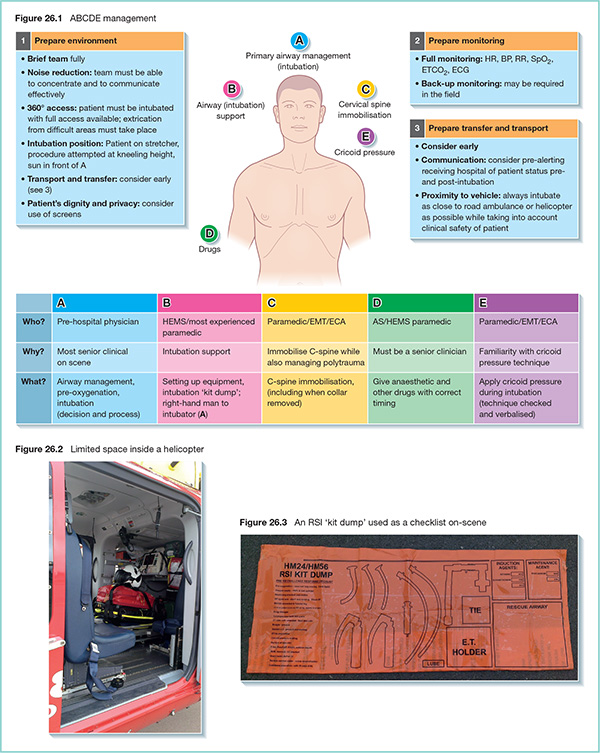26 Airway management is a priority in the resuscitation of a trauma patient and endotracheal intubation is the gold standard. Rapid sequence induction (RSI) describes the induction of general anaesthesia and subsequent endotracheal intubation. RSI is used in hospital for emergency anaesthesia only, since aspiration of stomach contents is a risk. However, since all pre-hospital anaesthesia is an emergency, RSI is indicated for all patients requiring anaesthesia in the field. The following issues must be taken into account when conducting pre-hospital anaesthesia. Pre-hospital anaesthesia may be required on the road, in a field, or in the small confines of a house, whereas in-hospital anaesthesia is carried out in the controlled environment of an anaesthetic room. Pre-hospital anaesthesia must, therefore, have strict clinical governance, checklists and specific operating procedures. Before in-hospital anaesthesia, patients undergo anaesthetic review weeks before surgery, and will always be starved before the procedure. In the pre-hospital phase, patients are often in extremis, critically ill with multiple injuries and unprepared for the anaesthetic procedure. In hospital, the anaesthetic procedure will always be overseen by several doctors, including some who will be senior practitioners. If the procedure becomes complicated, support can be summoned quickly. In the field, the pre-hospital doctor may be the only physician on scene. The doctor will be required to carry out this procedure with limited help. It is imperative that the physician who practises anaesthesia in the field is of an appropriate grade with evidence of competency-based training. Practice and simulation training are pivotal to safe pre-hospital anaesthesia.
Anaesthesia in the pre-hospital environment

Safety
Clinical complexity
Operator-dependent
Transfer
Stay updated, free articles. Join our Telegram channel

Full access? Get Clinical Tree








